Maui Oceanfront Property: Getting to Know the Oceanfront Property Addendum
Humans are spoiled. We tend to think of things the way we want them to be instead of the way they really are. Take the ocean for example. It can be gentle, warm, crystal clear – ahhhh…and on days like the one pictured below, we just love it so. It can also be unruly, destructive, dangerous. That’s just the way things are.
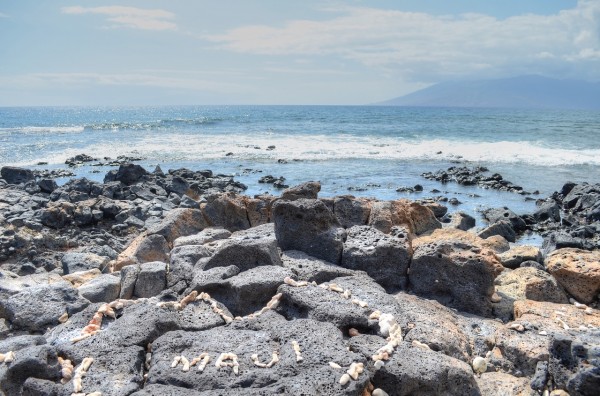
Here in Hawaii, if you are going to buy an oceanfront property, you will likely be asked to sign the HAR Standard Form Oceanfront Property Addendum.
The “Shit” Happens Addendum
The oceanfront property addendum discloses pertinent important information specific to the acquisition and ownership of oceanfront property. It brings attention to some ramifications of oceanfront property ownership from two different worlds: The Governmental/Regulatory World and The Natural World.
Click to enlarge
In this blog post, I will give you a brief overview of areas that are covered by the Addendum and online resources for further investigation. I am not licensed to offer legal advice, and this blog post shall not be construed to be legal advice! Please contact your attorney if you have any questions about the ramifications of signing Real Estate Documents.
Here is a link to a voided Oceanfront Property Addendum for your reference. The following represents some of the topics referenced in the document:
Special Management Area
It’s very likely if you are purchasing oceanfront property on Maui that it is in a “Special Management Area,” or SMA for short. This means that alterations or new construction will warrant extra scrutiny. From the county website:
The purpose of the Special Management Area Use permit is to regulate any use, activity, or operation that qualifies as “development,” and has a total cost fair market value of $500,000 or more; or has significant adverse environmental or ecological effect within the Special Management Area.
Digging Deeper: Maui County’s SMA Permit Site.
Below: Sample Portion of SMA Map showing Olowalu Shoreline.
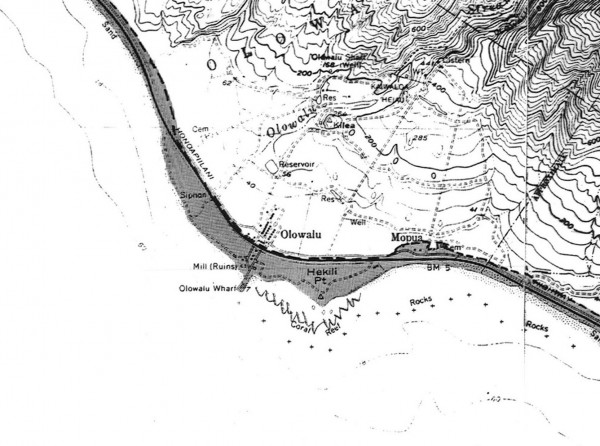
Erosion and Accretion: Caveat Emptor
The ocean giveth, and the ocean taketh away. Erosion refers to the process whereby beaches and land are gradually stripped away by natural action of the ocean. Accretion results when the ocean increases the shoreline by depositing sand and/or debris.
In some cases, such as Baldwin Beach on the north shore of Maui, entire structures can be compromised by erosion – the former public bathroom at one point had waves lapping at its front door, its entire concrete slab folded in half and undermined by erosion. The structure was eventually demolished completely, and a new facility built much farther inland. Pictured below is Ulua beach in front of the Wailea Elua Condominium complex. This once ample sandy Wailea beach turned into a rocky black boulder beach after just a few days of vigorous south swell:
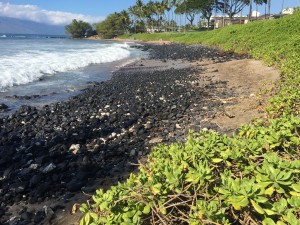
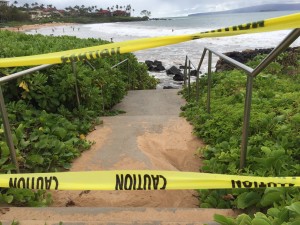
Shoreline Certification
If you are planning to build your dream house on Maui oceanfront property, you may be required to obtain a shoreline certification. A certified shoreline is often required as a pre-condition to obtaining a building permit or Special Management Area permit, and it behooves you to have a valid shoreline certification before hiring Frank Gehry to design your shoreline shack.
I will be devoting an entire blog post to the subject of shoreline certification, but after talking to Andy Bohlander who spent a generous amount of his time talking about the shoreline certification process, I want to leave you with a few valuable info nuggets that could prevent major pilikia (trouble) down the road.
Since the shoreline certification will aid in establishing the buildable area of an oceanfront property, you are well advised to have a shoreline certification prior to initiating the design process. Generally, architects like to use as much of the space as close as possible to the shoreline, so having a clear understanding of the required setbacks and buildable area is essential to the preliminary design process. There have been cases where entire projects had to be redesigned based on new information in the shoreline certification.
Here are two main functions (among others) of the shoreline certification:
1) Officially designate the shoreline for the purpose of establishing a valid setback for planning purposes. (Construction of a new house for example.) Note that the certification is valid for one year from the date it is approved. This means that although the construction process does not need to happen within the year, any building permit applications involving the certification must be approved within one year of the certification.
2) Establish boundaries between private and public lands. All lands makai of the shoreline in Hawaii are part of the Public Trust, and lateral shoreline access is guaranteed to the public. Maui oceanfront property owners need to understand the ramifications of this boundary so that they will know their rights and will not be surprised to discover fisherwomen or surfers hanging out in front of their property.
Digging Deeper: Shoreline Certification Web Portal – Samples of Applications can be viewed online by following the previous link and scrolling down.
Flood Zones, Tsunami Risk, Elevation Certificate
It’s pretty likely that if you are going to be living oceanfront you should be aware that your property will be more susceptible to floods, tides, Tsunamis etc. The seller’s disclosure statement should alert a potential buyer to the fact that property is within a flood zone, but as part of a buyer’s due diligence, she should inquire further into what the flood zones mean, and what an insurance company will need in order to insure the property. Here is a link to the state’s flood zone information portal.
What’s an elevation certificate you might ask? An elevation certificate is a document prepared by a licensed surveyor that will tell an insurer how far off the ground the living space of a house is. Think of two properties side by side in the same flood zone, one is slab on grade, the other is post and pier and is elevated 6 feet above the ground. Obviously the elevated house is less of a risk to an insurer – the elevation certificate will tell a more accurate story of how the improvements on a particular property could be affected by an adverse water event. Email me if you’d like to see a sample of an elevation certificate.
Here’s a portion of a flood zone map showing how some properties may be partially in a flood zone and partially out of a flood zone:
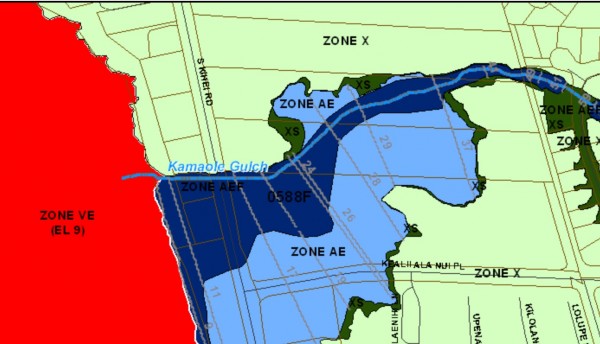
Are You Bored Yet?
I’m now officially bored with all this info. If any of you have read all the way through to here on this long blog post, I’m going to offer you a treat. Follow this link to see some gorgeous Maui oceanfront property for sale.
Liam S. Ball, Realtor Broker
Maui Oceanfront Property Buyer Representation
808.280.7809
liam@hawaiilife.com





Beth Thoma Robinson
February 12, 2015
Liam, thanks for the review. The information is valid state-wide so this is a good reference post for me to send Big Island oceanfront buyers as well. Where I live in North Kohala on the Big Island, we also have deeded lateral shoreline public access and the Ala Kahakai Trail through many oceanfront properties, further complicating a buyer’s building options. But that having been said, there is still only so much oceanfront!
Beth Thoma Robinson
February 12, 2015
Liam, thanks for the review. The information is valid state-wide so this is a good reference post for me to send Big Island oceanfront buyers as well. Where I live in North Kohala on the Big Island, we also have deeded lateral shoreline public access and the Ala Kahakai Trail through many oceanfront properties, further complicating a buyer’s building options. But that having been said, there is still only so much oceanfront!
Jeff Simon
January 22, 2018
Hi Liam. Love the post! I was just searching for a discussion of this topic for another agent and found your very helpful article. Thanks!